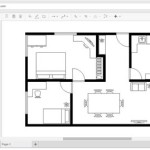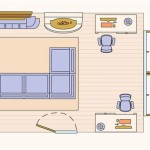House Floor Plans With Wrap Around Porch: A Comprehensive Overview
House floor plans with wrap-around porches represent a classic architectural design that provides aesthetic appeal, functional outdoor living space, and enhanced curb appeal. These designs are popular for their ability to blend indoor and outdoor living seamlessly, offering homeowners a versatile space for relaxation, entertainment, and enjoying the natural surroundings. This article will examine the various aspects of house floor plans with wrap-around porches, including their benefits, design considerations, architectural styles, construction materials, and factors to consider when selecting or designing such a plan.
Benefits of House Floor Plans with Wrap Around Porches
Wrap-around porches offer a multitude of benefits that contribute to the overall appeal and functionality of a home. One primary advantage is the expanded outdoor living space. The porch provides a covered area that can be used regardless of weather conditions, offering a place to relax, dine, or entertain guests. This extension of the living area encourages homeowners to spend more time outdoors, promoting a connection with nature and a healthier lifestyle. Furthermore, the porch acts as a buffer between the interior of the home and the external environment, helping to regulate temperature, reduce direct sunlight exposure, and minimize heat gain during warmer months. This can lead to energy savings and improved indoor comfort.
Another significant benefit is the enhanced curb appeal. A wrap-around porch adds architectural interest and character to a home's façade. It creates a welcoming and inviting atmosphere, making the house more visually appealing from the street. This can increase the property value and make the home more desirable to potential buyers. The aesthetic appeal is often associated with a sense of tradition and nostalgia, evoking images of classic American homes. Additionally, a wrap-around porch provides a safe and secure outdoor space for children to play or for pets to roam, while still remaining within sight and earshot of the homeowners.
Finally, a wrap-around porch can increase privacy. Situated around the perimeter of the house, the porch can offer a degree of separation from neighbors or passersby. Strategic placement of landscaping, such as shrubs or climbing plants, can further enhance privacy. This is particularly valuable in densely populated areas or homes located near busy streets. The porch serves as a transitional zone, allowing residents to enjoy outdoor living without feeling overly exposed.
Design Considerations for Wrap Around Porches
Designing a house floor plan with a wrap-around porch requires careful consideration of several factors to ensure optimal functionality, aesthetics, and structural integrity. The first is the overall size and proportion of the porch in relation to the house. A porch that is too large can overwhelm the house and detract from its architectural balance, while a porch that is too small may not provide sufficient usable space. The ideal size depends on the specific needs and preferences of the homeowners, as well as the dimensions and style of the house. A well-proportioned porch will complement the house's design and enhance its overall appearance.
The second consideration is the orientation of the porch. The orientation should be carefully planned to maximize sun exposure and natural ventilation. In warmer climates, it is generally desirable to orient the porch to the north or east to minimize direct sunlight and heat gain. In cooler climates, a southern or western orientation may be preferable to take advantage of solar warmth. The prevailing wind direction should also be considered to ensure that the porch benefits from natural breezes. Thoughtful orientation can significantly improve the comfort and usability of the porch throughout the year.
The choice of materials is another critical aspect of the design process. The materials should be durable, weather-resistant, and aesthetically pleasing. Common decking materials include wood, composite decking, and concrete. Wood is a traditional choice that offers a natural look and feel. However, it requires regular maintenance to prevent rot and insect damage. Composite decking is a low-maintenance alternative that is resistant to weathering and pests. Concrete is a durable and versatile option that can be stained or stamped to create a variety of looks. The choice of railing materials is also important. Options include wood, metal, vinyl, and cable railings. The railing should be strong and secure, while also complementing the overall style of the house.
Accessibility is a key consideration, especially for homeowners with mobility issues. The porch should be easily accessible from both the interior and exterior of the house. Ramps or gently sloping walkways can provide access for those with mobility impairments. The porch should also be wide enough to accommodate wheelchairs or walkers. Attention to accessibility ensures that the porch can be enjoyed by everyone, regardless of their physical abilities.
Architectural Styles and Wrap Around Porches
Wrap-around porches are commonly associated with several architectural styles, each with its unique characteristics and design elements. The most prevalent style is the Victorian, characterized by intricate detailing, ornate trim, and elaborate railings. Victorian porches often feature turned posts, decorative brackets, and gingerbread trim, creating a whimsical and romantic aesthetic. These porches are typically expansive and designed for both relaxation and entertaining.
Another popular style is the Farmhouse, which embraces simplicity and functionality. Farmhouse porches are often more modest in size and feature clean lines, simple railings, and a focus on natural materials. They are typically built with wood and often painted in neutral colors. Farmhouse porches evoke a sense of rustic charm and are designed for everyday use.
The Craftsman style also frequently incorporates wrap-around porches. Craftsman porches emphasize natural materials, handcrafted details, and a connection to the outdoors. They often feature exposed rafters, tapered columns, and stone accents. Craftsman porches are designed to be both functional and aesthetically pleasing, providing a comfortable and inviting outdoor space.
In addition to these traditional styles, wrap-around porches can also be incorporated into modern and contemporary designs. In these cases, the porches often feature clean lines, minimalist details, and a focus on functionality. Modern wrap-around porches may incorporate materials such as metal, glass, and concrete, creating a sleek and contemporary look.
Construction Materials and Structural Considerations
The choice of construction materials for a wrap-around porch is crucial for its durability, longevity, and aesthetic appeal. The foundation of the porch is typically constructed of concrete, which provides a stable and level base. The framing is usually built with wood, although steel or composite materials may also be used. Wood framing is relatively inexpensive and easy to work with, but it requires regular maintenance to prevent rot and insect damage. Steel framing is more durable and resistant to pests, but it is also more expensive. Composite framing offers a good balance of durability and cost.
The decking material is another important consideration. As mentioned earlier, common options include wood, composite decking, and concrete. Wood decking provides a natural look, but requires regular sealing and staining to protect it from the elements. Composite decking is a low-maintenance alternative that is resistant to weathering, rot, and insects. Concrete decking is durable and versatile, but it can be prone to cracking in climates with freeze-thaw cycles.
The roof of the porch is typically constructed of the same materials as the roof of the house. Common roofing materials include asphalt shingles, metal roofing, and tile roofing. The roof should be properly sloped to ensure adequate drainage and prevent water damage. The roof overhang should also be sufficient to protect the porch from rain and sun.
Structural considerations are essential to ensure the safety and stability of the porch. The porch must be designed to withstand the weight of people, furniture, and snow. The framing must be properly supported with posts and beams. The connections between the framing members must be strong and secure. A qualified structural engineer should be consulted to ensure that the porch is designed and built to meet all applicable building codes and safety standards.
Proper drainage is another critical structural consideration. The porch should be designed to prevent water from pooling on the surface. The decking should be sloped slightly to allow water to run off. Gutters and downspouts should be installed to collect rainwater and direct it away from the foundation of the house. Proper drainage will help to prevent water damage and extend the life of the porch.
Factors to Consider When Selecting or Designing a Plan
When selecting or designing a house floor plan with a wrap-around porch, several factors should be taken into account to ensure that the final result meets the homeowners' needs and preferences. The first is the budget. The cost of building a wrap-around porch can vary widely depending on the size, materials, and complexity of the design. It is important to establish a realistic budget and to shop around for the best prices on materials and labor. Consider the long-term costs of maintenance and repairs when making your decision.
The second factor to consider is the climate. The climate will influence the design and materials of the porch. In warmer climates, it is important to choose materials that are resistant to heat and humidity. In cooler climates, it is important to choose materials that are resistant to cold and snow. The design should also take into account the prevailing wind direction and the amount of sunlight exposure.
The third factor to consider is the lifestyle of the homeowners. The porch should be designed to accommodate the homeowners' lifestyle and activities. If the homeowners enjoy entertaining, the porch should be large enough to accommodate guests. If the homeowners enjoy relaxing outdoors, the porch should be designed to provide shade and privacy. The layout of the porch should also be convenient and functional.
The fourth factor to consider is the local building codes and regulations. It is important to ensure that the design and construction of the porch comply with all applicable building codes and regulations. This may require obtaining permits and inspections from local authorities. Failure to comply with building codes can result in fines and delays.

Wrap Around Porch House Plans For A 4 Bedroom Country Home

3 Bedroom Open Floor Plan With Wraparound Porch And Basement

Country Style House Plan With Wrap Around Porch

Complete Wrap Around Porch 58304sv Architectural Designs House Plans

Ardmore Park Country Home Farmhouse Floor Plans House Style
:max_bytes(150000):strip_icc()/porch-houseplan-1-38165edff22544bb8696ee285d2d9bb0.jpeg?strip=all)
These Southern Living House Plans Have Dreamy Porches

Simple House Plans With Porches Online Wrap Around Porch Small Floor

Southern Living Dreamy House Plans With Front Porches Blog Dreamhomesource Com

Modern Farmhouse Plan With Wraparound Porch 70608mk Architectural Designs House Plans

Barndominium Floor Plans With Wraparound Porch 9 Designs For Outdoor Relaxation







